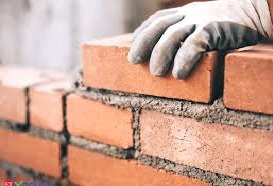As India seeks to build infrastructure that can undergird its ambitions of expanding into a $5-trillion economy by the middle of this decade, consumption of cement is set to increase by up to 6% immediately in the country which is the world’s second biggest market for the primary building material.
The Centre’s proposal to invest Rs 102 lakh crore to build ports, airports, motorways or irrigation canals is expected to drive demand for the commodity, of which India is also the world’s second-biggest producer after China but trails the global average in per capita consumption.
The lack of adequate investment in infrastructure has also been blamed for the broader economic slowdown, causing capacities to idle and factory expansion budgets to dwindle.
“The government’s infrastructure investment plan will boost the cement sector’s demand by 5-6%. The housing-for-all scheme is also about to gather momentum,” said Binod Modi, senior research analyst, Reliance Securities.
Data over the past two decades show that cement volumes are roughly 1.2-1.3 times the rate of percentage increase in gross domestic product (GDP).
Expanding pipeline facilities and creating power sector infrastructure in the coming months as part of the recent announcement will directly help sectors such as cement and steel, analysts said.
“Cement demand growth outlook is likely to be positive, about 4-5%+ and will be aided by low base gains. Incremental drivers on affordable housing, infra sectors need to be watched,” said Ritesh Shah, analyst, Investec.
Input cost pressures for the industry have lately declined. Prices of pet coke, an important raw material for cement, have come down by 15-20% through 2019, and the impact will be seen from the coming quarters in 2020.
“Cost deflation in terms of lower fuel prices and maintenance cost are likely to set off the negative realisation numbers of 3QFY20,” Binod Modi said.
Last year witnessed flat growth, but better monsoons this year could help revive demand from the rural hinterland, which contributes significantly to the industry’s IHB (individual home builder) segment.
“Good monsoons and expected healthy Rabi crop should aid rural housing demand for cement in FY21,” said Prateek Kumar, analyst, Antique Stock Broking. The price environment should improve as well.



